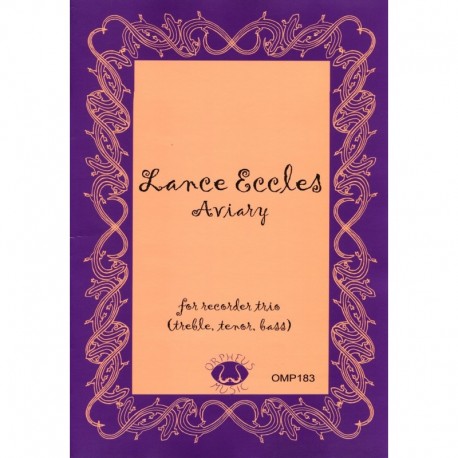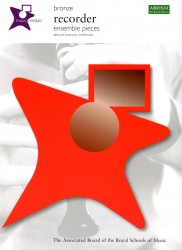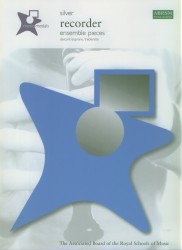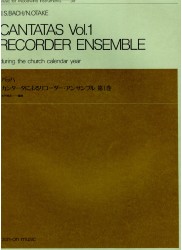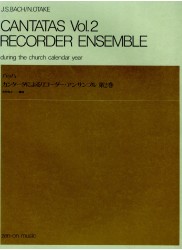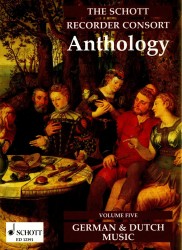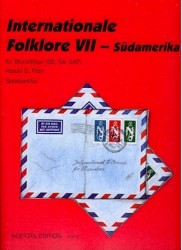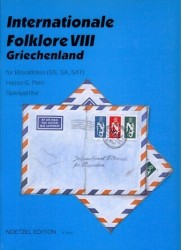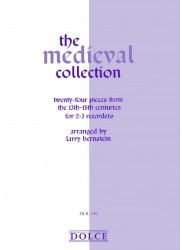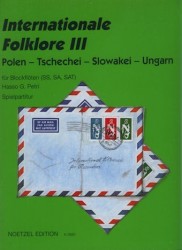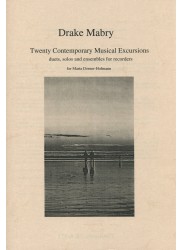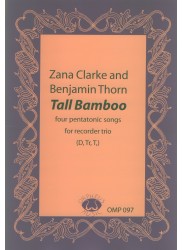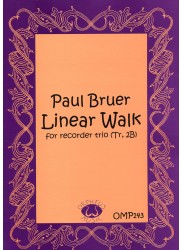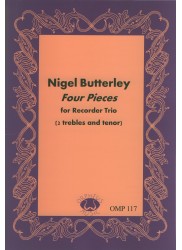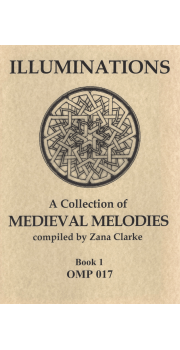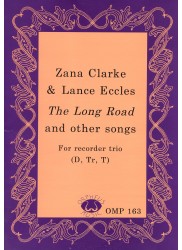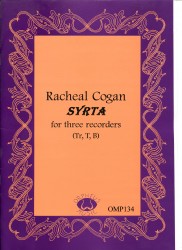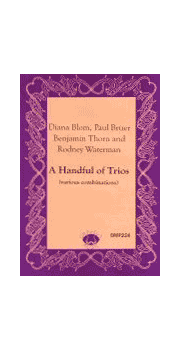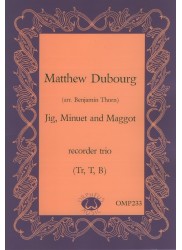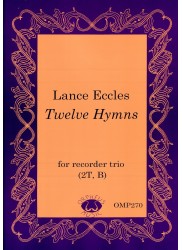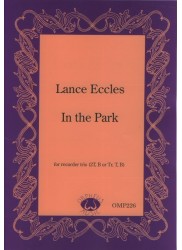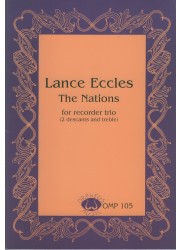No products
Prices are tax included
Aviary
Composer: Eccles - Lance
Instrumentation: Treble - Tenor - Bass
Period/genre: Australian Contemporary
Grade: Moderate
More info
*Contemporary Piece* in three movements. Set of three rhythmic character pieces.
1. Dodoes
2. Condors
3. Moas
_Score 4 pp. Parts each 4 pp._
REVIEWS OF TEN COMPOSITIONS BY LANCE ECCLES
(Orpheus Music, orpheusmusic.com.au).
For 20 years, Lance Eccles was a member of the Reluctant Consort, a group based in Sydney, Australia. Most of his compositions have been written for this consort or for meetings of the Sydney Society of Recorder Players. Eccles is retired from his position as a senior lecturer in Chinese at Macquarie University. His current web site states that he is an "honorary senior research fellow in the Department of Ancient History at Macquaie University in Sydney, Australia"; see www.ocs.mq.edu.au/~leccles.
There are generalities that apply to many of the pieces reviewed here. The reader will note that all of the pieces have colorful programmatic titles. Sometimes, the music des indeed match the literary ideas of the titles. In this reviewer's opinion, there are other cases (as specifically noted below) where the literary images of the title and the actual music do not seem to connect. It may be, in some cases, that some words in these titles simply have other connotations in Australian culture. In any case, a simple solution for this problem would be for the publications to include information regarding the literary ideas behind the titles and how these ideas connect to the music.
Concerning his style, rhythms are straightforward and on the easier side, oftentimes using light syncopation. For the most part, the voices are very active, with a common exception being the bass lines. It is rare for the upper voices to hold any note longer than a halfnote, sometimes even in the final measures. Eccles has a remarkable ability to have voices moving every half beat for extended passages. He does a great job keeping his voices in lively contrary motion, but he also uses parallel motion to great effect. He likes abrupt endings.
Some of his music uses lush Romantic harmonies; some is more contemporary and mildly dissonant or even sharply dissonant. Eccles is equally at home in all these harmonic idioms. To enjoy hearing and playing Eccles's music, you will need a taste for contemporary harmony. Having said that the rhythms are easy, I should also mention that most of his music is quite chromatic. If your groups are interested in playing these pieces, get out the chromatic scales; you will need to know all chromatic fingerings.
Eccles likes to use phrase modulations to distantly-related keys. There are no avantgarde techniques in any of these pieces, beyond simple flutter-tonguing. If I had to rate them for difficulty on a scale of one to five, most would rate a three with exceptions noted below.
Regarding prices listed, Orpheus Music will remove taxes from the total for non- Australian customers. Prices vary day to day. These pieces are listed with two purchase options: the published version (in hard copy with the well-known purple and orange covers) and the .pdf instantly-downloadable version from orpheusmusic.com.au.
OMP183 Lance Eccles AVIARY.
Aviary, another suite of three short pieces, opens up with "Dodoes." Think of a large Dodo bird as portrayed in cartoons - mindlessly wandering in no particular direction - and you will have an idea of this 40-measure trio. Loosely speaking, the piece is in ABA form, but it begins with a D minor chord and ends with the bass moving down an A Lydian scale. This is contemporary harmony, but not jarringly dissonant.
The second piece, "Condors," has interactive alto and tenor parts, and again a tamer bass line. It is more tonal, moving from D minor to C Major, and back to D minor. It also is a good musical picture of the magnificent flight of condors. One interesting aspect is that, just when I think the music is going to fall into a sequential pattern, it never quite does - perhaps representing the unpredictability of the flight of a condor.
The third piece, "Moas," suggests a flightless bird and is to be played in a "strutting" manner. This features lots of repeated notes, use of a descending whole-tone scale, and a series of minor chords that ascend by half-step. It starts and ends in D Major and frequently uses cross-relations, even in the last measure!
Susan Groskreutz, American Recorder, January 2011.
30 other products in the same category:
Reference: 9781860966033
Brand: ABRSM
Music Medals: Bronze Recorder Ensemble Pieces
Composer: ABRSM Instrumentation: Descant/Treble - various combinations...
In StockReference: 9781860966040
Brand: ABRSM
Music Medals: Silver Recorder Ensemble Pieces
Composer: ABRSM Instrumentation: Descant/Treble - various combinations...
Out of stockReference: 509021
Brand: Zen-on
JS Bach Cantatas Church Year Vol 1
Composer: Bach - Johann Sebastian Arranger: N Otake Instrumentation: 2 - 5...
In StockReference: 509022
Brand: Zen-on
JS Bach Cantatas Church Year Vol 2
Composer: Bach - Johann Sebastian Instrumentation: 3 - 5 Recorders - various...
In StockReference: ED12391
Brand: Schott
Schott Recorder Consort Anthology: German & Dutch Music Vol 5
Composer: Various Arranger: Ed Bernard Thomas Instrumentation: 3 - 5...
In StockReference: N3875
Brand: Noetzel
International Folk Music Vol 7: South America
Composer: Traditional Arranger: Hasso Petri Instrumentation: Descant -...
In StockReference: N3910
Brand: Noetzel
International Folk Music Vol 8: Greece
Composer: TraditionalArranger: Hasso PetriInstrumentation: Descant - Treble -...
In StockReference: DOL116
Brand: Dolce
The Medieval Collection
Composer: Various Arranger: Larry Bernstein Instrumentation: Treble - Tenor...
In StockReference: N3880
Brand: Noetzel
International Folk Music Vol 3
Composer: TraditionalArranger: Hasso PetriInstrumentation: Various...
In StockReference: FEA171
Brand: Flautando Edition
Twenty Contemporary Musical Excursions
Composer: Mabry - Drake Instrumentation: Treble/2 Trebles/3 Trebles...
In StockReference: OMP097
Brand: Orpheus Music
Tall Bamboo
Composer: Thorn/ClarkeInstrumentation: Descant - Treble - TenorPeriod/genre:...
In StockReference: OMP097.pdf
Brand: Orpheus Music
Tall Bamboo
PLEASE NOTE - DOWNLOADABLE PDF VERSION Composer: Thorn/ClarkeInstrumentation:...
$19.00 -20%In StockReference: OMP143
Brand: Orpheus Music
Linear Walk
Composer: Bruer - PaulInstrumentation: Treble - 2 BassesPeriod/genre:...
In StockReference: OMP117
Brand: Orpheus Music
Four Pieces for Recorder Trio
Composer: Butterley - Nigel Instrumentation: 2 Trebles - Tenor...
In StockReference: OMP117.pdf
Brand: Orpheus Music
Four Pieces for Recorder Trio
PLEASE NOTE - DOWNLOADABLE PDF VERSION Composer: Butterley - Nigel...
$20.50 -20%In StockReference: OMP017
Brand: Orpheus Music
Illuminations Vol 1
Composer: Clarke - Zana Instrumentation: Descant/Treble/Tenor - solos and...
In StockReference: OMP163
Brand: Orpheus Music
The Long Road and other songs
Composer: Clarke/EcclesInstrumentation: Descant - Treble - TenorPeriod/genre:...
In StockReference: OMP163.pdf
Brand: Orpheus Music
The Long Road and other songs
PLEASE NOTE - DOWNLOADABLE PDF VERSION Composer:...
$19.00 -20%In StockReference: OMP164
Brand: Orpheus Music
Once upon a Time and other songs
Composer: Clarke/EcclesInstrumentation: Treble - Tenor - BassPeriod/genre:...
In StockReference: OMP164.pdf
Brand: Orpheus Music
Once upon a Time and other songs
PLEASE NOTE - DOWNLOADABLE PDF VERSION Composer:...
$20.50 -20%In StockReference: OMP134
Brand: Orpheus Music
Syrta
Composer: Cogan - Racheal Instrumentation: Treble - Tenor - Bass...
In StockReference: OMP134.pdf
Brand: Orpheus Music
Syrta
PLEASE NOTE - DOWNLOADABLE PDF VERSION Composer: Cogan -...
$17.50 -20%In StockReference: OMP224*
Brand: Orpheus Music
A Handful of Trios
Composer: Blom, Bruer, Thorn & Waterman Instrumentation: Various trios
In StockReference: OMP224.pdf
Brand: Orpheus Music
A Handful of Trios
PLEASE NOTE - DOWNLOADABLE PDF VERSION ONLY. Composer: Blom, Bruer, Thorn &...
$20.50 -20%In StockReference: OMP233*
Brand: Orpheus Music
Jig, Minuet and Maggot
Composer: Dubourg - Matthew Instrumentation: Treble - Tenor - Bass...
In StockReference: OMP233.pdf
Brand: Orpheus Music
Jig, Minuet and Maggot
PLEASE NOTE - DOWNLOADABLE PDF VERSION Composer: Dubourg - Matthew...
$17.50 -20%In StockReference: OMP270
Brand: Orpheus Music
Twelve Hymns
Composer: Eccles - Lance Instrumentation: 2 Tenors - Bass Period/genre:...
In StockReference: OMP226
Brand: Orpheus Music
In the Park
Composer: Eccles - LanceInstrumentation: 2 Trebles - Treble/Bass - Tenor -...
In StockReference: OMP226.pdf
Brand: Orpheus Music
In the Park
PLEASE NOTE - DOWNLOADABLE PDF VERSION Composer: Eccles -...
$19.00 -20%In StockReference: OMP105
Brand: Orpheus Music
The Nations
Composer: Eccles - LanceInstrumentation: Descant - Treble -...
In Stock

